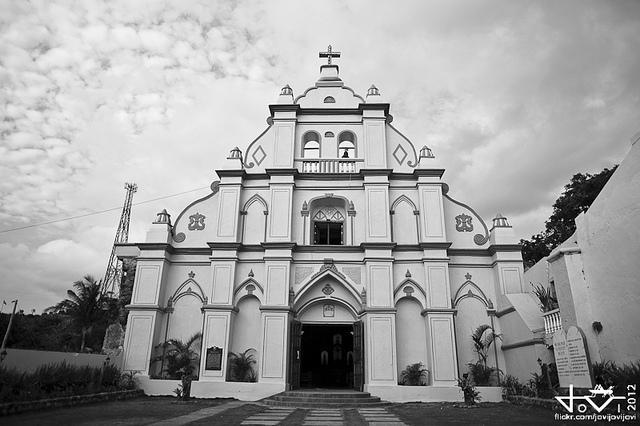
Though a small island that dotted the Philippine archipelago, Batanes is filled with amazing sites and attractions that give much reason for the visitors to love the place. One way to discover Batanes is by visiting its colonial churches. Through the years, these colonial churches continue to stand as one of the witnesses of how rich and wealth not only the history but also the culture heritage of the province.
To get you started, here are some of Batanes’ proudest churches.
- Santo Domingo de Basco Church – Established in 1783, the church is located in Basco. The church is dedicated to the Immaculate Conception and its patron saint is Santo Domingo de Guzman.
History – The structure was first built from 1787 to 1796 by Father Baltazar Calderon, OP and Father Bartolome Artiquez, OP. Several reconstructions were made on the church such as incorporating rocks by Father Francisco de Paula Esteban, OP in 1795 and the shortening of the nave and the reconstruction of the dacade by the Father Nicolas Castaño, OP in 1812 done in an espadaña style. The walls of the church were installed with massive pilasters from the foundation to top to protect it against typhoons and earthquakes. The Basco Cathedral is one of the first limestone building built during the Spanish regime.
In 1860, the church was damaged by a fire and rebuilt by Father Antonio Vicente, OP in 1863 and the roof was added by Father Mariano Gomez, OP in 1891. It survived the Filipino-American war (1899 to 1901) and the World War II (1941 to 1945), bishop Peregrin de la Fuente, OP, DD, reconstructing in 2002 by bishop Jose Salazar OP, DD, and Father Henry Romero S.O.L.T.

- San Carlos Borromeo Church – Located in Mahatao, Batanes, it was listed by the National Museum and the National Commission for Culture and the Arts as one of the 26 churches in the Philippines that are recognized as cultural icons.
History – It was built by the Dominicans in 1789 and the present church was rebuilt in 1873 by Onesimo Polo, who used limestone for the walls and cogon roofing. The stone beaterio or house for laywomen and other structures were built to serve as directions for people, especially the fishermen who use it as a guide on their way home.
The church has an espadaña-style façade similar to Santo Domingo de Basco Church. It has two round arches at roof levels for the bells and buttresses on the outer walls. The buttresses also served as stairways during maintenance of its then cogon-covered roof.

- San Jose de Ivana Church – Situated in Ivana, the church was established in 1814. It has a crenellated fortress-like campanile. Like the San Carlos Borromeo Church, San Jose de Ivana Church is made of limestone construction with original baroque architecture. The church was built during the 19th century by Dominican priests.

- San Vicente Ferrer Church – it was built of espadaña-style facade in 1844. The church was patterned after the one in Basco and declared as one of the 12 best destinations in the Philippines by the Department of Tourism in 1994. The church is located in Sabtang Island.

- Chavayan Ivatan Village Church – it is one of the main points of interests in visiting Ivatan villages formerly nominated on the UNESCO World Heritage List. Together with Savidug, they are two of the most preserved Ivatan villages in Batanes.

- Mt. Carmel Church – Like the other churches in Batanes, Mt. Carmel Church is worth to visit. This 400 year old church used stones as its walling remind of how Ivatans used coral and rock to make their homes.
How to Get There
By Sea – The Batanes Multipurpose Cooperative now operates the MV Ivatan Princess which runs the Currimao, Ilocos Norte–Basco, Batanes route. It leaves Ilocos Norte at 8pm on Wednesdays and Sundays and arrives in Basco at 4pm the next day. From Basco, it leaves at 3pm on Tuesdays and 10 pm on Fridays. The fare is 1,200 pesos and the travel time is about 18 hours.
By Air – The fastest way to get to Batanes from Manila is by plane. Peak Season is from March-June so be sure to get your tickets months before your scheduled trip to Batanes.
- http://en.wikipilipinas.org/index.php?title=Santo_Domingo_de_Basco_Church
- http://en.wikipilipinas.org/index.php?title=San_Carlos_Borromeo_Church
- http://www.flickr.com/photos/jhersey33/3508502463/
- http://en.wikipilipinas.org/index.php?title=San_Vicente_Ferrer_Church_(Sabtang%2C_Batanes)
- http://www.flickr.com/photos/jovijovijovi/7180763748/
- http://www.flickr.com/photos/jovijovijovi/7117931209/









